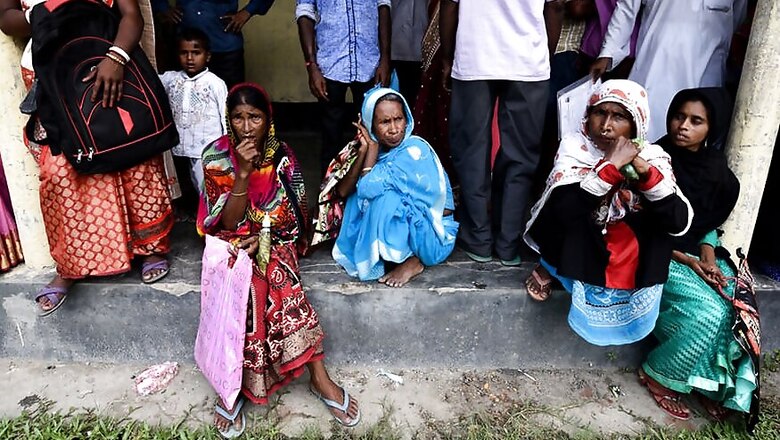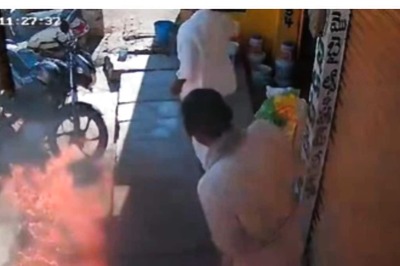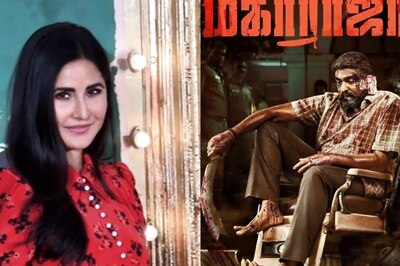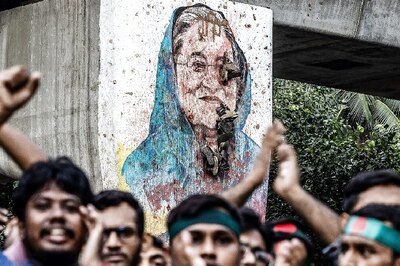
views
The news of four million people being excluded from the final draft of Assam NRC and pushing them to the verge of being stateless has caught the attention of various stakeholders across the country and beyond. The media has also brought out cases of large number of well-established individuals, including a former Chief Minister of Assam, family members of former President of India, family members of former deputy speaker of Assam Assembly, number of armed forces personnel who couldn’t make it to the final NRC draft. But the stories of fear and anxiety of the marginalised and vulnerable sections have still remained unreported.
Among Muslim dominated areas in the state, Kalgachiya in Barpeta district is one of the most affluent with a high literacy rate. According to community leaders and few government officials, only a nominal percentage of applicants have been excluded from the final draft. People who are capable of raising their voice and have access to proper documentation were able to apply and hence made it to the NRC draft.
On the other hand, the scenario in Mazidbhita, a char village around 15 kilometres from Kalgachiya, is completely different. A large number of residents of this village of over 200 households have been excluded. Mazidbhita is an island of the Beki river, a ferocious tributary of the mighty Brahmaputra. Zahedul Islam, one of the youths from the char who volunteered to check the draft NRC online, says. “It seems more than 40 per cent names are not in the list and those excluded are mostly women and children”.
A visibly anxious boatman said that while his name is there on the list, his wife has not been included in the draft NRC. Most passengers in the boat also described stories of how their family members, mostly women and children, are not in the list.
On the bank of the river, in a crowded small tea stall everyone was speculating about the reason of rejection. Their major apprehension is that the panchayat certificate provided by married women to prove linkage with the legacy holder has been rejected. Gani Dewani, an influential community leader, said, “Only 15-20 families have all members in the list. NRC has divided families with some members being included and others excluded.”
The NRC authority, concerned of ‘breaching of privacy’ of the excluded, hasn’t made the reason of rejection public. Those rejected will have to file another application to get to know the reason for being excluded from NRC.
The discussion in the char village centred around the panchayat certificate and delayed birth certificate. They said initially these certificates were accepted by the NRC authority but later they declined to accept birth certificates and started scrutinising panchayat certificates “strictly”.
Fifty years old Moriyam Begum lives in a tin-roofed house surrounded by the jute and paddy fields in the char. Illiterate Moriyam was trying to find a particular document with the help of her 12-year-old daughter from a pile of papers scattered on the floor. “Keeping documents in order is a challenge,” she murmured.
Almost every year char dwellers experience flood and erosion and often have to move from one place to another. In the last two decades, Moriyam has shifted her residence thrice often taking shelter in the temporary relief camp during the flood. Keeping valuable documents safely becomes a major challenge for these people who are often labelled as illegal immigrants.
Though her husband and eldest son’s name appeared in the draft, she along with two of her daughters and one son were left out from the final draft NRC. Since Moriyam doesn’t have any admissible education documents (only board certificate is accepted), she provided a panchayat certificate.
More than 4.7 million married women submitted panchayat certificate as linkage document out of which 1.7 million women were brought under "original inhabitants" status, a privileged category and were exempted from the stringent verification process. However, Muslims and Bengali Hindus, didn’t fall under the category thus despite being from one of the most marginalised social groups, Muslim women from the char areas had to go through a stringent verification process. Moriyam is one of the 2.9 million “unfortunate” women who submitted panchayat certificate.
It is speculated that most of these Muslim women are from char areas of Assam, which accommodates nearly 10 per cent of Assam’s population. There are more than 2,200 river island villages spread over 14 districts in Assam, which are geographically plagued with floods and erosion.
As per the last survey by Assam the government in 2002-03, as many as 68% of char people live under the below poverty line (BPL) and over 80 per cent of them are illiterate. Assam Human Development Report (2014) says that the Mean Year of Schooling (MYS) in char areas is 4.76 years which is the lowest among all marginalised communities in Assam. The abysmally low female literacy rate was one of the reasons of higher number of women submitting panchayat certificate from these areas.
Another reason that is equally responsible for making the char women most vulnerable in the NRC updating process is the feudal legacy and continuance of core patriarchal practices like child marriage. A study conducted by Manoj Goswami says that in char areas the mean age of marriage remains low 17.1 years.
National Family Health Survey (NFHS) 4 data reveals that in char dominated districts nearly half of the women get married before the age of 18. When women are married off before attaining the age of 18, they miss the opportunity to get enlisted in the voters list in their parental house. In absence of other documents (read educational document), it effectively delinks them from their parents and forces them to use panchayat certificate to prove linkage with parents. If they were married after getting enlisted in the voters list at parental address i.e. after attaining the legal age of marriage, they could have used the voter’s id for linkage
Today, it seems the “masculine state” is hell bent to snatch the citizenship right from women like Moriyam. She hasn’t been able have proper sleep and food ever since the final NRC draft was published. Now her only concern is ‘would they send me to ‘Kalapani’?’ She used the infamous cellular jail in Andaman and Nicobar Island to describe possible detention centres.




















Comments
0 comment